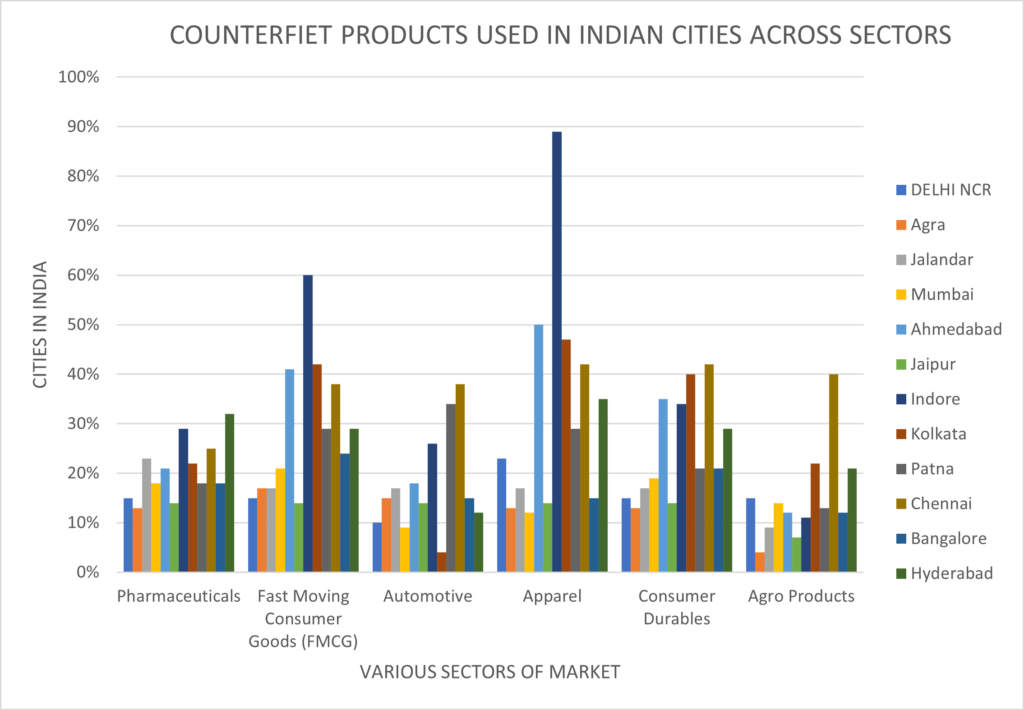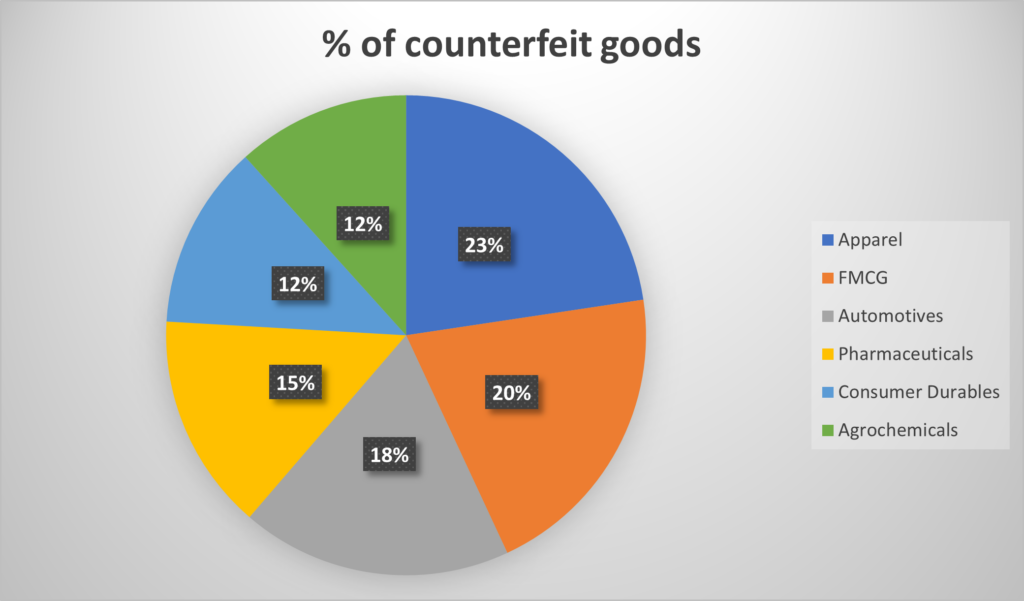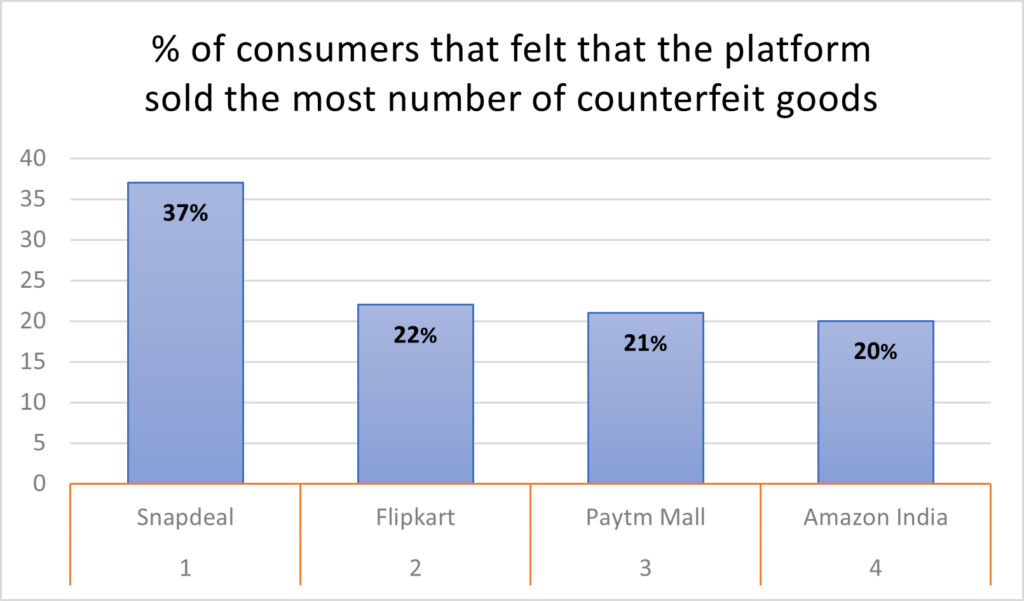Features
How AI and Legal Reform Can Work Together to Hit Back Against Counterfeiters in India
Published: October 30, 2024

Nithya Somasundaram R.K. Dewan & Co Mumbai, India Brands and Innovation Committee
Digital adoption and smartphones are driving India’s e-commerce growth. However, the widespread sale of counterfeit goods threatening brand reputation and consumer safety is hampering this growth. Despite strong intellectual property (IP) laws, enforcing anticounterfeiting measures online is challenging.
Despite challenges such as enforcement issues in identifying counterfeits and limitations in investigative methods, effective solutions are available to strengthen the security of India’s e-commerce sector. Key legislative frameworks, including the TRIPS Agreement, the Customs Act, IP laws, and the Consumer Protection (E-Commerce) Rules, 2020, empower Indian officials to implement targeted measures. Additionally, using advanced technologies and improving interagency coordination are promising strategies to strengthen anticounterfeiting efforts.
Counterfeiting is a global issue affecting economies like India. It undermines legitimate businesses, endangers consumer safety, and causes substantial losses. The rise of e-commerce presents unique challenges for combating counterfeits. Artificial intelligence (AI) can revolutionize this fight. AI tools such as advanced surveillance and real-time data analysis can enhance efforts to transform anticounterfeiting strategies to protect businesses and consumers from counterfeit goods in both physical and digital markets. The Indian Penal Code imposes strict penalties for counterfeiting. AI platforms help brand owners identify and remove counterfeit listings, protecting their IP.
India’s legal framework, including IP laws and the Customs Act, is also crucial for intercepting counterfeit goods at borders. However, despite civil and criminal enforcement measures, timely implementation remains a challenge.
The Consumer Protection (E-Commerce) Rules, 2020 aim to safeguard consumer interests online. While AI-powered tools can verify product authenticity and vendor credibility thereby creating a safer digital marketplace, preventive measures—such as consumer awareness campaigns—are also crucial. Collaboration between businesses and authorities, along with the strategic use of AI, is vital to staying ahead of counterfeiters.
Despite civil and criminal enforcement measures, timely implementation remains a challenge.
Comprehensive Overview of Counterfeit Items in India
The State of Counterfeiting in India 2021 report, from the Authentication Solution Providers’ Association (ASPA), stated that counterfeiting results in a loss of INR 1 trillion to the Indian economy in 2021 and that one in every three Indian adults falls victim to fake products from e-commerce websites.
This data from 12 cities, covering six sectors, shows the extent of the problem:
| Cities | Counterfeit Data in Percentages | ||||||
| Pharmaceuticals | Fast-Moving Consumer Goods (FMCG) | Automotive | Apparel | Consumer Durables
|
Agro Products | ||
| 1 | Delhi NCR | 15% | 15% | 10% | 23% | 15% | 15% |
| 2 | Agra | 13% | 17% | 15% | 13% | 13% | 4% |
| 3 | Jalandhar | 23% | 17% | 17% | 17% | 17% | 9% |
| 4 | Mumbai | 18% | 21% | 9% | 12% | 19% | 14% |
| 5 | Ahmedabad | 21% | 41% | 18% | 50% | 35% | 12% |
| 6 | Jaipur | 14% | 14% | 14% | 14% | 14% | 7% |
| 7 | Indore | 29% | 60% | 26% | 89% | 34% | 11% |
| 8 | Kolkata | 22% | 42% | 4% | 47% | 40% | 22% |
| 9 | Patna | 18% | 29% | 34% | 29% | 21% | 13% |
| 10 | Chennai | 25% | 38% | 38% | 42% | 42% | 40% |
| 11 | Bangalore | 18% | 24% | 15% | 15% | 21% | 12% |
| 12 | Hyderabad | 32% | 29% | 12% | 35% | 29% | 21% |
Source: The State of Counterfeiting in India 2021
According to a joint report by CRISIL in 2023 (formerly, the Credit Rating Information Services of India Limited) and ASPA, “Apparel (31%), FMCG (28%), and Automotives (25%) are the top segments where consumers came across a counterfeit product, followed by Pharmaceuticals (20%), Consumer Durables (17%), and Agrochemicals (16%).”

Source: ASPA and CRISIL Report

Source: ASPA and CRISIL Report
Counterfeiting in the Digital Age
Counterfeit goods were once confined to street vendors and market stalls, but they are now widely available in the digital realm. Social networking platforms, online retailers, and independent websites all sell counterfeit goods. While the Internet has provided legitimate businesses with unparalleled opportunities to expand and reach customers globally, it has also enabled counterfeiters to amplify their operations. Nowadays, even consumers looking for genuine products can easily fall prey to counterfeit schemes that use deceptive pricing tactics and realistic images. In a survey of 30,000 consumers conducted by the community platform Local Circles, the data shows the following:

Source: Local Circles
Existing Legal Framework
As a signatory of the TRIPS Agreement, India uses customs procedures outlined in Articles 51-60 to protect IP at its borders. IP owners can request customs to detain products suspected of infringement by providing supporting documentation and detailed descriptions.
Safeguards against abuse include requirements for guarantees, and customs promptly notifies IP holders of detentions, allowing time for legal action. India’s Intellectual Property Rights (Imported Goods) Enforcement Rules, 2007 also cover designs and geographical indications, though enforcement can be challenging due to the need for expert assessment. Overall, the Indian Customs Act and IP regulations empower customs officials to ban counterfeit imports and safeguard associated IP rights.
The Indian government regulates imports and exports through notifications under Section 11 of the Customs Act, 1962, which can ban or restrict certain items. IP rights, including copyrights, designs, geographical indications, patents, and trademarks are protected under this. Section 113(d) allows the confiscation of export items under similar offenses, while Section 111(d) permits the seizure of imported goods violating these restrictions.
Collaboration between businesses and authorities, along with the strategic use of AI, is vital to staying ahead of counterfeiters.
Exceptions to Safe Harbor Protection
The Indian judiciary has consistently emphasized that intermediaries cannot absolve themselves of responsibility by citing safe harbor protection under Section 79 of the Information Technology Act (IT Act), 2000.
In L’Oreal v. Brandworld, the Delhi High Court ruled against ShopClues for selling counterfeits, requiring them to publish seller details and allow only certified sellers (2018) MANU/DE/4083/2018). Following this, the All-India Online Vendors Association (AIOVA) requested that this ruling be extended to all e-commerce platforms in India.
The judiciary has shown resolution in issuing injunctions to prevent the manufacture and sale of counterfeit goods. In Sirona Hygiene Private Limited v. Parulben Navnath Chothani, the Delhi High Court ruled that Internet sales of counterfeit goods must be restricted to protect consumers and trademark owners (25.04.2022 – DELHC): MANU/DE/1864/2022).
- In Puma SE v. Indiamart Intermesh Ltd., Justice C. Hari Shankar noted that counterfeiting is pervasive in both offline and online markets (2024) MANU/DE/0012/2024). The 2023 amendment to the IT Rules requires intermediaries to prevent users from hosting content that violates IP rights, recognizing counterfeiting as a known economic evil. Kent RO Systems Ltd. v. Amit Kotak established that intermediaries must remove mentions of counterfeit products immediately
((2017) (MANU/TN/4488/2023)). Failure to conduct necessary checks could make intermediaries complicit in selling counterfeit goods, excluding them from Section 79(2) protection. This was upheld in Christian Louboutin SAS v. Nakul Bajaj and Ors. (2018), affirming that Section 79 protection for intermediaries is not absolute.
Protection Under the Consumer Protection (E-Commerce) Rules, 2020
The Consumer Protection (E-Commerce) Rules, 2020 enhance e-commerce accountability and transparency, with AI crucial for enforcement, particularly against counterfeiting. These rules tackle unfair practices like deceptive advertising and fake reviews. Rule 5 requires e-commerce companies to use AI to verify product details, ensuring descriptions and images match the actual items. Companies must appoint a grievance officer and provide a complaint tracking number within a month.
Section 4 mandates disclosure of importer identities and contact details and bans unfair trade practices. AI helps monitor and verify product authenticity, while Section 5 requires sellers to provide accurate product information and images to prevent counterfeits. It also mandates disclosure of previously blocked sellers, improving consumer protection. The role of AI in identifying and removing counterfeit listings makes online shopping safer and more transparent.
Nowadays, even consumers looking for genuine products can easily fall prey to counterfeit schemes that use deceptive pricing tactics and realistic images.
Combating Counterfeiting with Advanced Technology
With AI, machine learning, and blockchain, Indian businesses are enhancing product authenticity. SKF, a bearing manufacturer, uses the SKF Authenticate app to track counterfeits. By scanning a DMC (Data Matrix Code), users can verify a product’s authenticity, with SKF experts conducting further reviews if needed.

Source: NeuroTags
NeuroTags provides anticounterfeiting solutions with open and secure tags. The visible open tag, scanned with a smartphone, reveals product details and authenticity, while the secure sticker confirms authenticity. NeuroTags’ AI algorithms detect tag copying and provide real-time customer behavior data for marketing insights.
RFID (radio-frequency identification) tags are commonly used for tracking and verification, alongside methods like serialization, batch coding, tamper-evident labels, and security foils. Nanotechnology allows detection of nearly impossible-to-duplicate nano-scale tags, while digital signatures and cryptography ensure product legitimacy.
Indian pharmaceutical firms use blockchain and QR codes to combat counterfeit drugs. Partnering with Interpol and the World Customs Organization, they employ RFID and GS1 standards for secure data exchange and a global database. AI and data analytics help identify counterfeiting trends, with AI detecting patterns and verifying authenticity through image recognition and smartphone apps.
The Way Forward
Anticounterfeiting technology is evolving rapidly. To effectively use AI, diverse data sets are crucial for accurate counterfeit detection, and AI tools must have safeguards against malfunctions and fraud.
In India, the prevalence of counterfeiting poses considerable economic, health, and legal challenges across multiple sectors, notably in pharmaceuticals. Although AI technologies are deployed to combat counterfeit products, the task remains complex, especially with the rapid emergence of e-commerce platforms and increasingly sophisticated fraud techniques. Fraudsters now leverage AI to generate deceptive content, such as fake images, videos, and reviews, which complicates detection. The societal acceptance of counterfeit products during economic hardships further exacerbates these issues, underscoring the need for robust, AI-driven countermeasures.
AI advancements, such as using behavioral modeling to identify targeted products and real-time scanning for authenticity, can help to combat counterfeiting. Consumer awareness is also crucial; informed consumers can better avoid counterfeit products, reducing demand.
According to INTA’s Gen Z Insights Report, a notable 60 percent of Generation Z respondents in India (of the sample of those polled, 51 percent female/49 percent male), find counterfeits acceptable when the quality meets their expectations. This perspective reflects a broader trend among young consumers who prioritize value and quality. However, their attitudes are not fixed; they would likely reconsider their stance if they were made aware that these counterfeit products could pose health risks, harm the environment, or contribute to organized crime. This indicates that transparency and awareness are crucial in shaping the consumer behavior of this influential demographic.
To control counterfeiting, a strategy combining technology, consumer education, and strong IP enforcement is essential. Legal reforms to address AI and new technologies are needed to protect IP rights.
AI could transform anticounterfeiting efforts in India’s e-commerce sector. It can improve counterfeit detection, interagency coordination, and real-time verification. A comprehensive approach that integrates advanced technology, strict legal frameworks, and consumer education is crucial for addressing the impact of counterfeits on the economy and public health in the long term.
Although every effort has been made to verify the accuracy of this article, readers are urged to check independently on matters of specific concern or interest.
© 2024 International Trademark Association